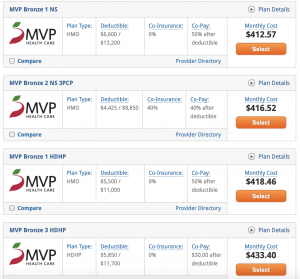Restrictions to Access In Schenectady
Project targets root causes of poor health in poorer areas of Capital Region
Clearly, the health of the community is not as good as it could be, the attached article highlights a few issues such as waiting until manageable health problems like asthma, are severe and ending up in the Emergency Department.
In the previous post, it was discussed that parts of the Schenectady community are at or under the poverty line, that parts of the community receive or qualify for food stamps, that a significant portion of the community has an overall low socioeconomic standing. These factors make paying for health care difficult. There are many other essential expenses that come before healthcare, such as food and housing. It is also important to note that Schenectady is a neighborhood that is “high-risk cost burdened,” meaning that members of the community spend 30% or more of their income on housing (Health Equity Report). Thus, seeing a doctor on a regular basis, or at all, is probably not something that people are able to do. It is unlikely that someone struggling to make ends meet would be able to use their income to buy health insurance rather than food to put on the table.

This suggests, that income plays a large factor in access to healthcare. In 2014, 9.4% of the community from ages 18-64 did not have health insurance. This statistic is dated, and may not be as useful today yet, it does give an indication as to where Schenectady has been with regard to insurance coverage. This statistic suggests that a portion of the community could not afford health insurance. According to the New York State Health Insurance website, there are 9,334 uninsured members of the community in Schenectady. Additionally, the average monthly cost of health insurance is $519. As it happens, rent in Schenectady is roughly the same amount per person, per month. So, if given the option between paying rent or health insurance, it is more likely that a person would choose to pay rent.
Thus, without insurance that leaves people to pay for any expenses out of pocket. This may deter people from establishing a primary care physician and seeing that doctor on a regular basis. The Department of Health released a strategies list for many local areas to help provide better health care. One of the strategies listed includes “encouraging patients to establish medical homes for primary/preventive care to reduce emergency services for non-urgent care needs” (Department of Health). This suggests that people might be over using emergency department services because they are unable to pay for regular primary care visits. Overall, it seems like the crux of the system, no matter how effective the medicine may be, is finding the money to pay for it. There are free clinic options in Schenectady, see the below link to find the different locations.
Works Cited:
https://www.health.ny.gov/prevention/prevention_agenda/strategies/access_to_health_care.htm
https://www.freeclinics.com/cit/ny-schenectady
https://www.nyhealthinsurer.com/insurance/quote/result/?_af=WwMcYCgAAicXAAEIaCE

